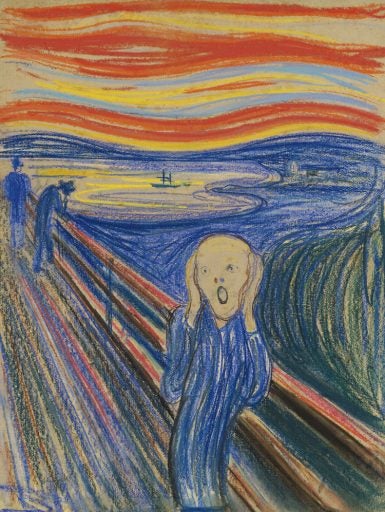How can we effectively teach students to be professional artists at a time when some of society’s economic values are so unrealistic? It is true the high-end art market is thriving, but the contemporary art community is arguing whether such outrageous public auctions and private sales are good or bad for art.
Unlike any other luxury purchase or economic investment, fine art – in particular modernist paintings and sculptures – have been selling at ever-increasing astronomical sums during the past few year’s international economic crisis, with no letup in sight.
Earlier this year, one of the four versions of Edvard Munch’s painting “The Scream” sold for the astonishing figure of $120 million at Sotheby’s public auction, surpassing the previous record of $106 million held for Picasso’s “Nude, Green Leaves and Bust” two years before. “The Card Players” by Paul Cezanne holds the record of $254 million for a “private sale” of a modernist painting.
I often wonder about the ownership and value of art and the state of teaching art in higher education in our contemporary society because, as some people have said: “You cannot own a piece of artwork; you can only purchase the right to become its legal guardian.”
The unspoken truth is that most New York City galleries know that many of their patrons are not just buying the actual high-end art – they are purchasing the right to own, for a relatively short while, the myth that surrounds the art. These are the people who buy artwork because they believe the art can be an extension of themselves – a symbol of their success or whatever myth the artwork projects amongst their peers.
Scholars of humanity have always measured the worth or value of a historical culture by the evidence of that society’s artifacts.
We look back from where we are now to understand, and eventually to make value judgments on the ways and means of those who lived before us. The awareness and understanding of previous cultures theoretically provides us with the wisdom to do better.
But in our contemporary society – where abstract values of everything, not just art, have muddled our understanding of what value actually is – we are hard put to essentially communicate with or understand each other. To make a simple analogy to one of our society’s most common measurements of value: How are we to calculate the worth of the stock market if its value is said to rise or fall based on human perceptions and emotions?
Many university art programs across the country teach fine-art students the survival skills for navigating the art market. Curriculum emphasizes exposure to and emulation of the 100 or so contemporary artists who are currently successful in the art world.
Although well intentioned, that type of preparation can’t really be taught because the art world is a fickle, continuously changing place.
What we consider to be savvy behavior, clever artwork or stylish introductory monologues today may well be passé or even foolish tomorrow. The vast majority of students who embrace this strategy are destined for disappointment and failure.
How can we engage in constructive conversation about the value of art to those optimistic, young art students who want to succeed as professional fine artists? How do we talk about making a valid contribution to the historical continuum of visual perception? How do we teach these young artists who intend to create work that stands as future evidence of the times we live in?
If we can teach art students to experiment with creative processes that provide them with the experiences necessary to gain skills and self-criticality to make art that arises from within – work that emerges from their personal accumulation of knowledge and wisdom – they will have a much better opportunity to succeed professionally.
Their eventual navigation of the art world will be anchored by a personally earned visual voice and the confidence that comes from creating work that is authentically their own.
As more young artists reject the inanity of simply appropriating “fashionable” art, and more collectors reject the absurdity of the high-end art market, we might see the emergence of more courageous and unconventional art patrons of modest and wealthy means who are willing to take a leap of faith.
Perhaps they will buy an unknown or emerging artist’s work just because they are moved by it and are passionately compelled to own it for what it represents to them about our culture at this place and time in humanity’s shared experience.
UCF Forum columnist Carla Poindexter is an associate professor of fine art at the University of Central Florida and can be reached at Carla.Poindexter@ucf.edu.
